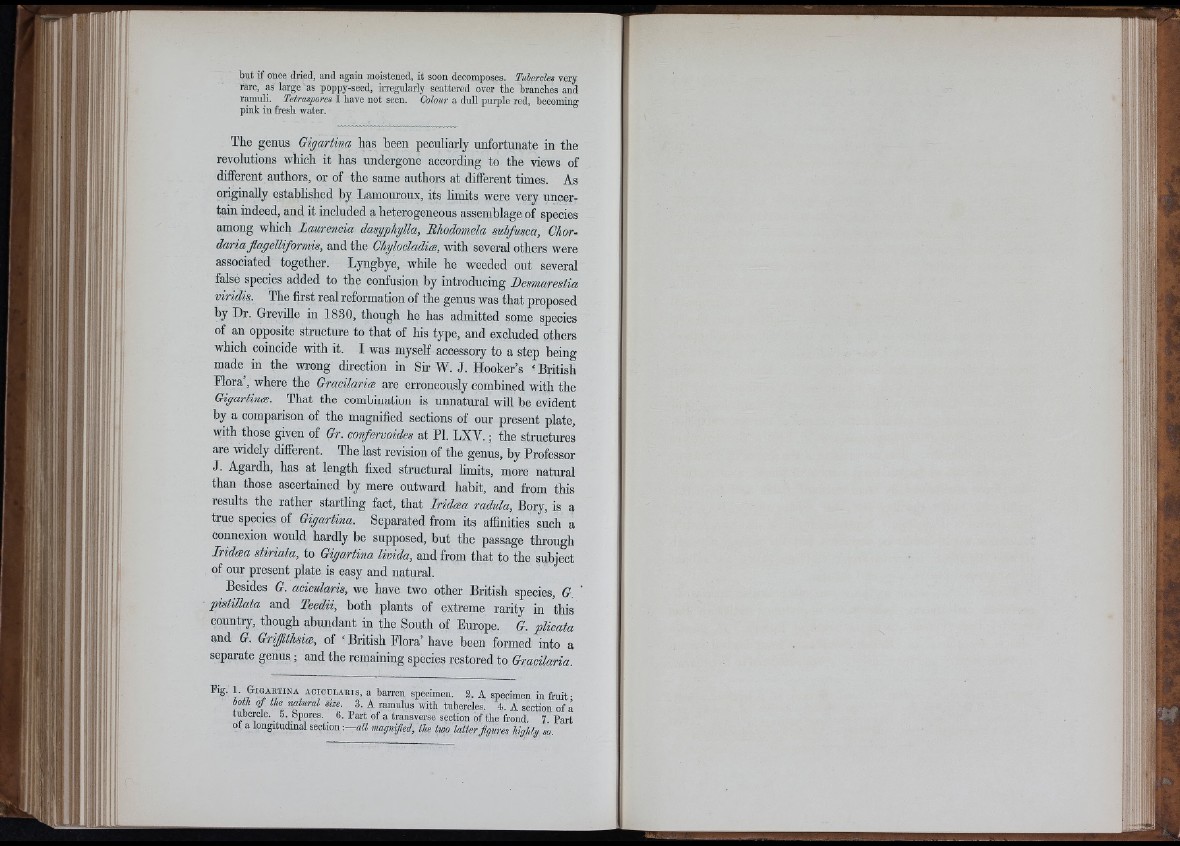
il
i f : .
il i ï
but if once dried, and again moistened, it soon decomposes. Tubercles very
rare, as large as poppy-seed, irregularly scattered over the branches and
ramuli. Tetraspores 1 have not seen. Colour a duU purple red, becoming
pink in fresh water.
The genus Gigartina has been peculiarly unfortunate in the
revolutions which it has undergone according to the views of
different authors, or of the same authors at different times. As
originally established by Lamouroux, its limits were very uncertain
indeed, and it included a heterogeneous assemblage of species
among which Laurencia dasyphylla, Ehodomela subfusca, Chordaria
flageUiformis, and the Chylocladiæ, with several others were
associated together. Lyngbye, while he weeded out several
false species added to the confusion by introducing Desmarestia
viridis. The &st real reformation of the genus was that proposed
by Dr. Greville in 1830, though he has admitted some species
of an opposite structure to that of his type, and excluded others
which coincide with it. I was myself accessory to a step being
made in the wrong direction in Sir W. J. Hooker’s ‘ British
Flora’, where the Gracilaria are erroneously combined with the
Gigartina;. That the combination is unnatural will be evident
by a comparison of the magnified sections of our present plate,
with those given of Gr. confervoides at PI. LXV. ; the structures
are widely different. The last revision of the genus, by Professor
J. Agardh, has at length fixed structural limits, more natural
than those ascertained by mere outward habit, and from this
results the rather startling fact, that Lridoea radula, Bory, is a
true species of Gigartina. Separated from its affinities such a
connexion would hardly be supposed, but the passage through
Lridoea stiriata, to Gigartina livida, and from that to the subject
of our present plate is easy and natural.
Besides G. acicularis, we have two other British species, G. '
pistillata and Teedii, both plants of extreme rarity in this
country, though abundant in the South of Lurope. G. plicata
and G. Griffitlma;, of ‘ British Flora’ have been formed into a
separate genus ; and the remaining species restored to Gracilaria.
Fig. 1. G ig a r t in a A c reuLA R is , a barren specimen. 3. A specimen in fruit ■
both o f the natural size. 3. A ramulus with tubercles. 4. A section of à
tubercle. ^ 5. Spores. 6. Part of a transverse section of the frond. 7 , Part
oi a longitudinal section -.— all magnified, the two latter figures highly so.